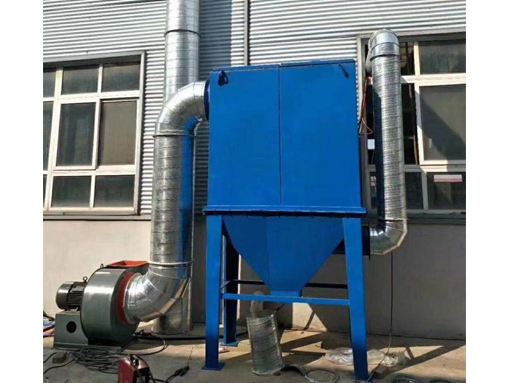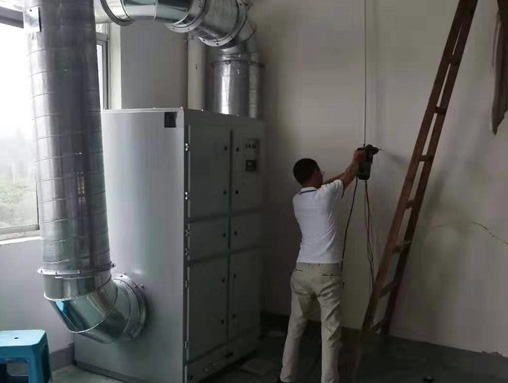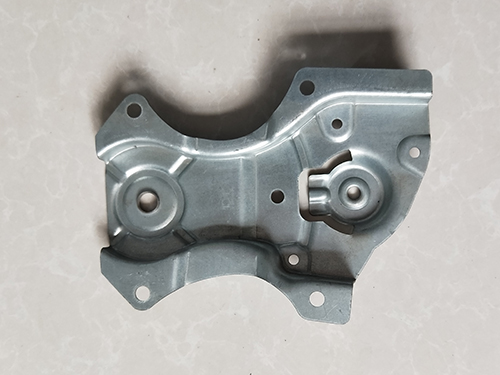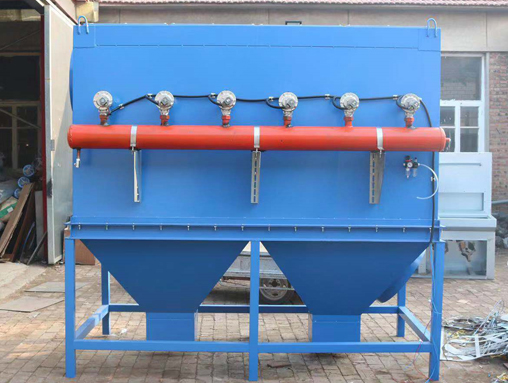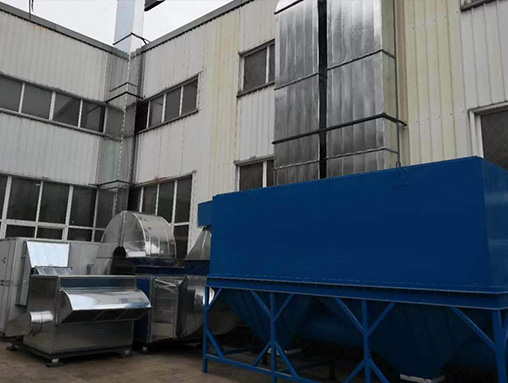Maintenance and production problem handling of stamping parts molds
【1】 Maintenance and upkeep of stamping molds: 1. Inspection and maintenance during mold installation: Before mold installation, the upper and lower surfaces of the mold should be cleaned and wiped, and the mold installation surface should be correctly matched with the press worktable. 2. Stamping parts; After the mold is installed, open the mold, guide the mold to the mechanism, and clean the surface of the mold cavity to ensure the quality of the workpiece. 3. Lubricate or apply grease to the sliding parts of the mold. 4. Check and maintain the side guard plate, clean the punching waste channel and holes. 5. Check the side pins, screws, and other parts of the mold, and promptly update and replace any problems found. 2、 Maintenance during production: 1. Regularly apply oil lubrication to the pressing ring, rounded corner, edge trimming die, and flanging blade of the drawing die. 2. Regularly clean the waste channel of the trimming punching die small hole. 3. Regularly observe and feel the usage status of the mold during production. If any abnormalities are found, immediately stop the machine for inspection and promptly eliminate them. After troubleshooting, proceed with production. 3、 Maintenance after production: 1. Inspection of molds after production is completed. 2. Clean the mold thoroughly, removing any waste or debris from the mold, and ensuring that there are no waste materials in the waste bin. 3. Provide truthful feedback on any issues discovered during the use of the mold, and record them in the handover form or notify the repair personnel to carry out the repairs. 4、 First and second level maintenance of molds: The main content of maintenance is: 1. Mold updates and maintenance are carried out by production operators. The main contents of maintenance are cleaning, lubrication, and inspection. 2. The secondary maintenance work of the mold is completed by the mold repair personnel, and records are kept according to the maintenance situation. The main content of second level maintenance is to polish the rounded and roughened parts of the mold, and if there are pressure pits, the mold should be matched. b. Repair and restore the guiding parts found to have problems during inspection. c. Weld and update the broken and collapsed edges of the mold during use. d. Replace damaged or failed elastic parts such as springs (pay attention to the specifications and models of the springs). e. Replace the punch that breaks, bends, gnaws, or damages the punch sleeve during the use of the mold. f. Check if the fastening parts are loose or damaged. If there is, replace it. g. Check if the pressing plate and unloading plate are damaged, and update the damaged parts if necessary. h. Check for leaks in the pneumatic system; If there is, update or replace it. 5、 The maintenance of long-term molds should be scheduled every two months. The method is to open the mold, remove dust and rust, and apply oil to all parts of the mold. 【2】 1. Processing of stamping parts production issues: Bonding and scratches: defects that occur on the surface of parts or molds due to friction between materials and convex or concave molds; 2. Burr: mainly occurs in the gap between the cutting die and the cutting die, and burrs are produced when the gap between the cutting edges is large or small; 3. Line offset: During the forming of the component, the part that first comes into contact with the mold is compressed and forms a line; 4. Convex concave: foreign objects (iron filings, rubber, dust) mixed into the unwinding line causing convex concave; 5. Turmoil: Due to uneven stress, poor matching of stretching ribs, or poor control of the press slide, the corners or embossed areas of the workpiece may experience twisting and strain; 6. Wrinkles: Wrinkles on the edges or r area are caused by poor adjustment of the press slider, low press accuracy, inappropriate adjustment of air cushion pressure, large punch or r area, and other reasons. 7. Other specific issues: In daily production, there may be situations where the punching size is too large or too small (possibly exceeding the specification requirements) and differs greatly from the size of the punch. In addition to considering factors such as the design size, processing accuracy, and punching gap of the forming punch and die, the following aspects should also be considered to solve them. 1) When the cutting edge wears out, the tensile stress on the material increases, and the tendency for the stamped part to flip and twist increases. When flipping materials, the punching size will tend to decrease. 2) The strong pressure on the material causes plastic deformation, which can lead to an increase in punching size. When reducing the pressure, the punching size will tend to be smaller. 3) The shape of the end of the convex die blade. If a slope or arc is made at the end, due to the reduced cutting force, the punching part is less likely to flip or twist, resulting in a larger punching size. When the end of the punch is flat (without a slope or arc), the punching size will relatively decrease. 8. Methods for producing flipping and twisting of stamped parts: 1) Reasonable mold design. In the progressive die, the arrangement of cutting sequence may affect the metal stamping parts; Precision of forming. For the cutting of small parts of stamped parts, it is generally recommended to first arrange a larger area for punching and cutting, and then arrange a smaller area for punching and cutting to reduce the impact of punching force on the forming of stamped parts. 2) Press down on the material. Overcoming the traditional mold design structure, a material holding gap is opened on the discharge plate (i.e. when the mold is closed, the material can be compressed). The key forming part, the discharge plate is made into an embedded structure to facilitate the solution of grinding (pressure) damage caused by long-term stamping at the pressing part of the discharge plate, which cannot compress the material. 3) Add strong pressure function. Thicken the size of the unloading insert pressing part (normal unloading insert thickness H+0.03mm) to increase the pressure on the material on the concave die side, resulting in flipping and twisting deformation of the stamped part during punching. 4) Trim a sloping or curved surface at the end of the convex die blade. This is a method to reduce the punching force. Reducing the buffer cutting force can alleviate the tensile force on the material on the concave die side, thereby achieving the effect of flipping and twisting the stamped part. 5) In daily mold production, attention should be paid to maintaining the sharpness of the cutting edges of the convex and concave molds. When the cutting edge wears out, the tensile stress on the material will increase, leading to an increased tendency for the stamped part to flip and twist. 6) Unreasonable or uneven punching gaps are also reasons for the flipping and twisting of stamped parts, which need to be overcome.
